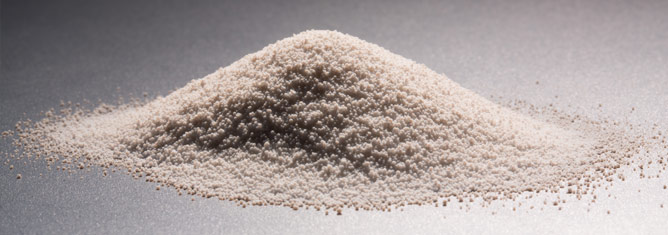
Properties of Pigments
An approximate match for a specific color is made by mixing a combination of 2 or more colors from the tube, creating a color that is vastly different from anything that could be found in a tube. While such mixtures may be perfectly fine for use a study of color theory (will get into this at a later date) reveals the difficulty of securing precise, accurate affects unless the proper pigment is employed. The differences in physical and optical properties of pigments with different chemical or physical structures are clearly apparent, even when a similarity in color, shade, or tone can be seen. In general the mixture of two colors will cause the color to become more dull and less clear. Additions of a third or more cause even more reactions in clarity. However rarely should you apply color 100% out of the tube, control of your affects and tone comes from experience. It should be noted the fillers present in lower grades of paint do affect the properties of the paint. A pure color has more clarity and tone and will give better affects all around. The process of restoration requires careful precise mixing, a process seldom required for the artist to know.

Inert Pigments
The inert fillers or extenders are white or nearly white pigments that have low refractive indices. When ground in oil as one would do in typical artists colors they have little or no opacity. They are used as cheapeners, and to impart to oil paint various properties such as bulk, tooth, reinforcement of the film, hardness, softness, ect. When mixed with aqueous binders or mediums, they are less transparent. In some cases such as chalk-glue gesso mixture many of them produce brilliant, white, and adequately opaque coatings. When chalk is mixed with oil it creates a muddy, translucent paste more intense than the oil itself. Colored pigments that have been reduced or let down with inert materials will typically more muddy and weaker than pure pigment.
Most manufactures today employ inert pigments with the artists needs in mind. They are used to even out the tinting strength of their line of artist oil colors to accommodate their "inter mixability". As the large portion of the artist community is made up by amateur or hobby artists it makes sense the manufactures would produce cheaper products and leave to professional artist to supply themselves. However it is to be said, good artist supplies doesn't make a good artist but a good artist can do some really cool things even with bad supplies. In a few cases, notably with organic synthetic pigments, such as phthalocyanine, the pigments tenting power is so vast when compared with the rest of the pigments on the palette that the need to add alumina hydrate or blanc fixe and calcium carbonate to improve the quality and ease of manipulation. Another legitimate use for inert pigments is in gouache paints. where several pigments have precipitated chalk added to improve their brilliance and smoothness of the paint. With a bit of fineness silica can be used to impart tooth or coarseness to the ground, and occasionally to the paint. Mica and asbestine will retard the settling of some liquid paints, and improve structural stability.
Commercially Available Inert Pigments
alumina hydrate
asbestine
barytes
blanc fixe
chalk
China clay
gypsum
infusorial earth
magnesium carbonate
marble dust
mica
pumice
silica
talc
whiting
Alumina hydrate is the most common additive for extending transparent pigments, and blanc fixe for heavy, opaque colors. Precipitated chalk is used in making gesso and pastel along with its uses in gouache.

Permanence of Pigment
The permanence of a pigment is its ability to maintain its hue throughout the life of the work in which it is used, by any conditions which its likely to encounter. Some pigments are affected by heat or chemicals, but as these are not typical of what a finished work may endure, perfectly permanent only referres to more normal circumstances. Pigments are tested for resistence to fading by subjecting them to concentrated ultraviolet light. This allows the duplacation of months worth of direct sunlight within a relatively short amount of time. While this test can not be mathamaticly caculated to a scientific answer, its often seen to provide sufficant answers to the pigments ability to handle abuse. Industrial pigments are tested with an addition of outdoor weathering.
New descoveries in artificially made pigments are introduced in several ways. Sometimes a valuable color is allowed to remain in obscurity for many years before circumstances arise for its introduction to the palette. While others grow in popularity over night only to be discarded for having low permanence or otherwise unsatisfactory. In the early twentieth century, pigments of greatly impoved light resistance began to appear and where quickly adopted by makers of decorative paints, printing ink, and other industrial applacations. Some of these colors such as Harrison red where introduced to the artists palette, but none where found to be sufficently lightproof.
We now have organic pigments of a far greater permanence than those of not very long ago. We must proceed very slowly towards there adaption as there is still testing to do before we have a definent answer as to their permanence. By the 1950s only three sythetic organic pigments where universally approved for use: alizarin crimson, phthalocyanine blue, phthalocyanine green. Since that time the ASTM has adopted many new organic synthetic pigments. Alizarin, or madder lake, is universally accepted as necessary and permanent color for easel painting. The faiding of color is impossible to prevent as this process isnt the physical color disappearing reather its a chemical change within the paint, and just because its labeled permanent doesnt mean its expected to last any more that 5 or 6 years of direct exposure without any sign of fading. With the advancements in art supplies however materials that desplay defects in a work of art after 25 to 50 years is considered a failure to uphold your responability as an artists to produce work that will last.
to be continued...
Still a lot to add on this subject but I need a short break, Will probably be to late by the time its finished so might have to wait till tommorow.
If your an artist make sure you get yourself involved with my Weekly Sketch Contest!
https://steemit.com/art/@dcrockete/2nd-weekly-sketch-contest
Previous Educational Posts
History of Art
https://steemit.com/art/@dcrockete/the-history-of-art
History of Tempera Painting
https://steemit.com/art/@dcrockete/tempera-painting
History of Oil Painting
https://steemit.com/art/@dcrockete/the-history-of-oil-painting
The Artists Responsibility of Control
https://steemit.com/art/@dcrockete/the-artists-responability-of-control
Introduction to Pigments
https://steemit.com/art/@dcrockete/introduction-to-pigment
Furthermore on Pigments
https://steemit.com/art/@dcrockete/furthermore-on-pigments
Choosing Your Palette
https://steemit.com/art/@dcrockete/choosing-your-palette
Your continued support is much appreciated. I'm glad you guys are enjoying this journey through education of the arts as much as I am. In arts recent past "education" has been a very low priority for many artists, limited to only learning the application and completely ignoring the technical. My goal with these posts are to change that idea as its clearly having an affect on the art community.
Great post. Did you ever hear about the blind painter? He figures out pigments based on texture. Amazing stuff.
Downvoting a post can decrease pending rewards and make it less visible. Common reasons:
Submit
I could see that, lol. They are all very unique, doubt I could do it blindfolded though.
Downvoting a post can decrease pending rewards and make it less visible. Common reasons:
Submit
Each night I come to steemit thinking I'll be around for a few minutes to check some posts out and I end up spending hours reading and learning awesome things thanks to posts like this one.
Thank you DC :,-)
Downvoting a post can decrease pending rewards and make it less visible. Common reasons:
Submit
Lol, glad you liked it :)
Downvoting a post can decrease pending rewards and make it less visible. Common reasons:
Submit